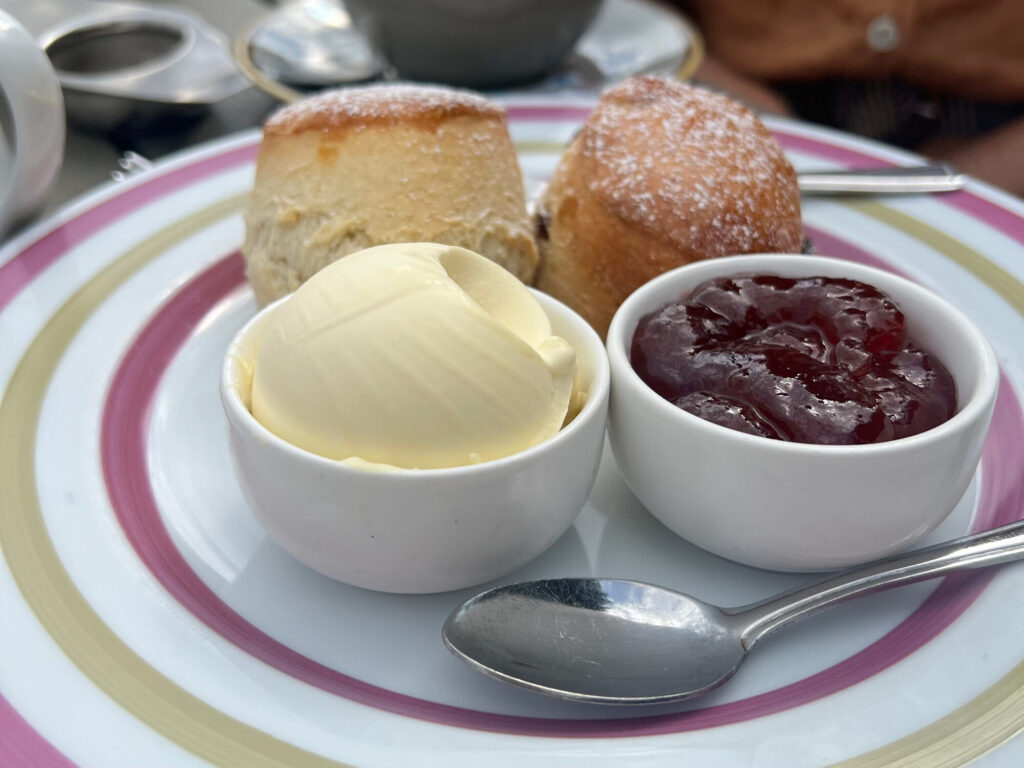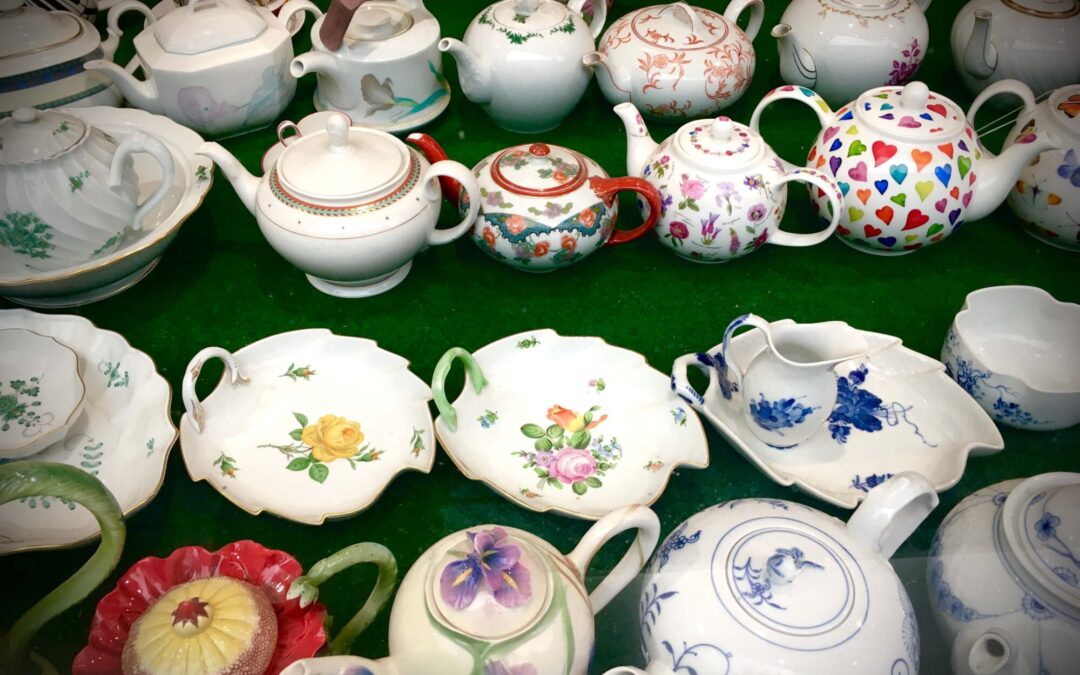What’s the difference between afternoon tea, high tea and cream tea?
Many visitors to Britain are confused when it comes to differences between afternoon tea, high tea and cream tea. You’ll want to know the difference before choosing your tea experience. Despite their common association with tea, each has its own unique characteristics, history, and cultural significance.
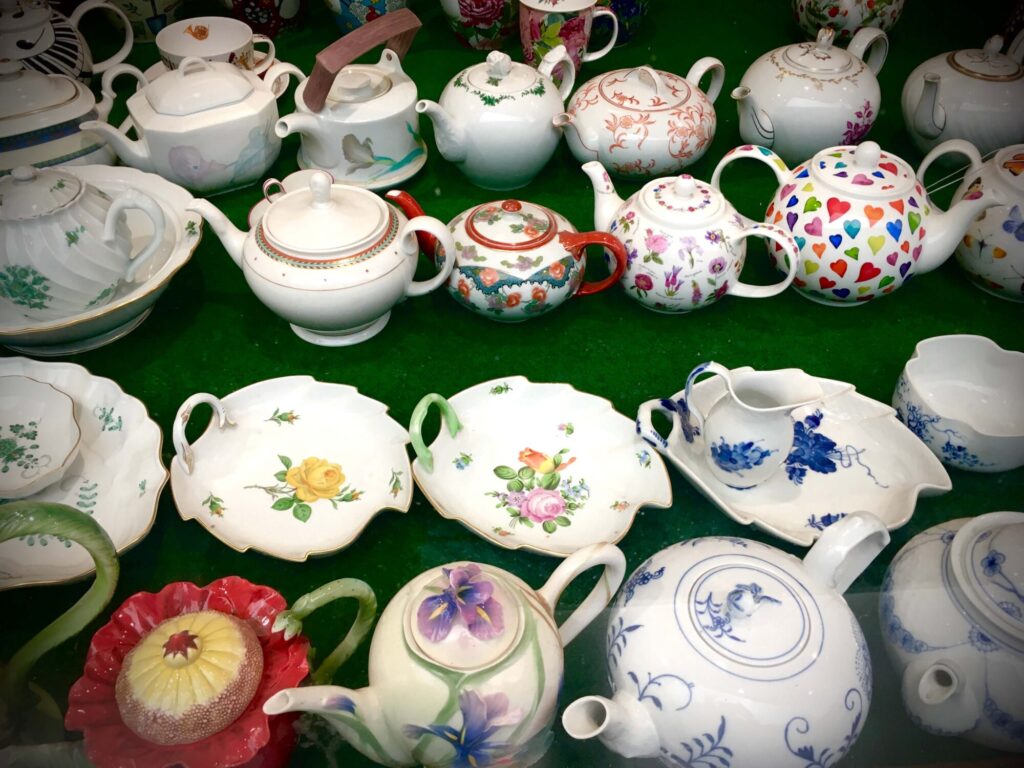
Afternoon Tea
Afternoon Tea conjures images of three tiered porcelain stands crammed with dainty sandwiches, buttery scones and delicate patisserie.
Originating in the early 19th century, it was popularized by Anna, the Duchess of Bedford. The Duchess, experiencing hunger pangs between lunch and dinner, began requesting tea and light snacks be served in her chambers. This practice soon caught on among the aristocracy and eventually became a fashionable social event.
Afternoon tea can take place any time of day and traditionally includes variations of three “Courses”. The bottom, and largest tier, is a first course of dainty savoury finger sandwiches. The second tier is for scones served with clotted cream and jam. The top tier is the last course, and includes an assortment of bite sized sweets. A pot of freshly brewed tea is served alongside, usually with milk.
The significance of afternoon tea lies not only in its culinary offerings but also in its social aspect. It became an opportunity for the upper classes to socialize and showcase their refinement. Elaborate tea parties became a staple of high society. Today, afternoon tea remains a popular indulgence for both locals and tourists. Windsor offers a variety of afternoon tea experiences, from the elegant to cozy tea rooms on cobblestone alleys.
Local tip: It’s hard to imagine not coming away from afternoon tea completely stuffed, but if you fancy more, it is not poor etiquette to ask for a “Refresher” of anything. And if you run out of tea, lifting the lid of the pot will alert your server that you’d like a second steeping of your tea.
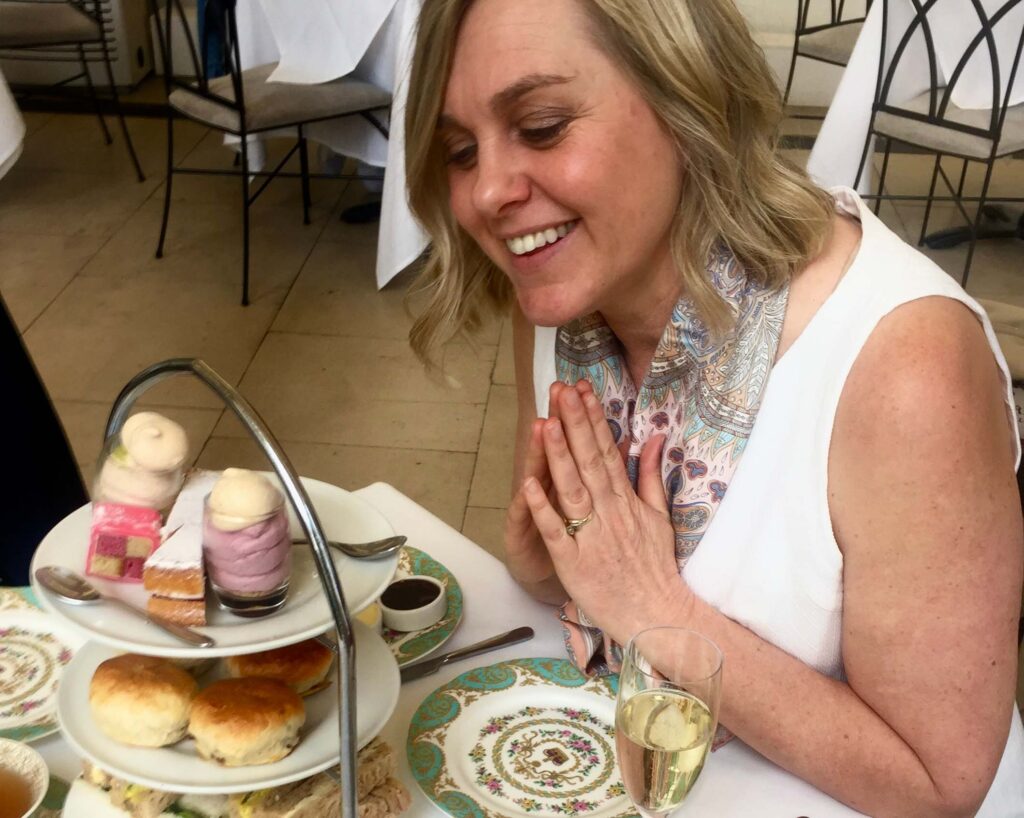
High Tea
High Tea is not synonymous with the aristocratic elegance of afternoon tea and you are unlikely to see it on any menu. In fact, High Tea has more humble origins, originating in the working-class communities of Britain during the 18th century Industrial Revolution. Unlike afternoon tea, which was enjoyed by the leisure class, High Tea was a hearty meal consumed by laborers and miners after a long day’s work. Think bread, cheese, savoury pies, sausage rolls, and vegetables.
High Tea got its name from the height of the dining table around which it was traditionally served. Typically taking place between 5 pm and 7 pm, High Tea consisted of more substantial fare, including hot dishes such as meat pies, fishcakes, sausage rolls, baked beans, and eggs, accompanied by bread and butter. Unlike the dainty finger foods of afternoon tea, the offerings of High Tea were designed to provide sustenance and energy to the working class.
While High Tea may lack the refinement and elegance of afternoon tea, it holds its own place in British culinary history as a representation of the working-class culture. It was simple and hearty sustenance for for those who toiled in factories and mines,
Local tip: You’ll be hard pressed to find a restaurant promoting high tea, but if you are ever invited to a local’s house for “Tea”, they likely are inviting you to an evening meal (Dinner).
Cream Tea
Cream Tea, perhaps the most straightforward of the three, is a regional variation that originated in Devon and Cornwall. Its history is tied to the production of two quintessentially British ingredients: clotted cream and scones.
The origins of Cream Tea can be traced back to the 11th century. Clotted cream was introduced to the region by the monks of Tavistock Abbey. This thick, indulgent cream became a staple of the local cuisine. The tradition of serving scones with clotted cream and jam evolved over time, eventually becoming known as Cream Tea.
Unlike the elaborate spreads of afternoon tea or the hearty meals of High Tea, Cream Tea is a simpler affair. It consists primarily of scones served with clotted cream, strawberry jam, and a pot of tea. The debate over whether the cream or jam should be spread first on the scone (known as the “Devonshire” or “Cornish” method) adds a playful touch to this beloved tradition.
Cream offers a taste of the West Country’s culinary heritage, inviting visitors to indulge in a quintessentially British treat for less than £10 and without the carb loading of afternoon tea.
Local tip: Cream tea can be all of the pleasure and none of the fuss of afternoon tea. Many places in Windsor offer cream tea with all the pride and tradition of afternoon tea.
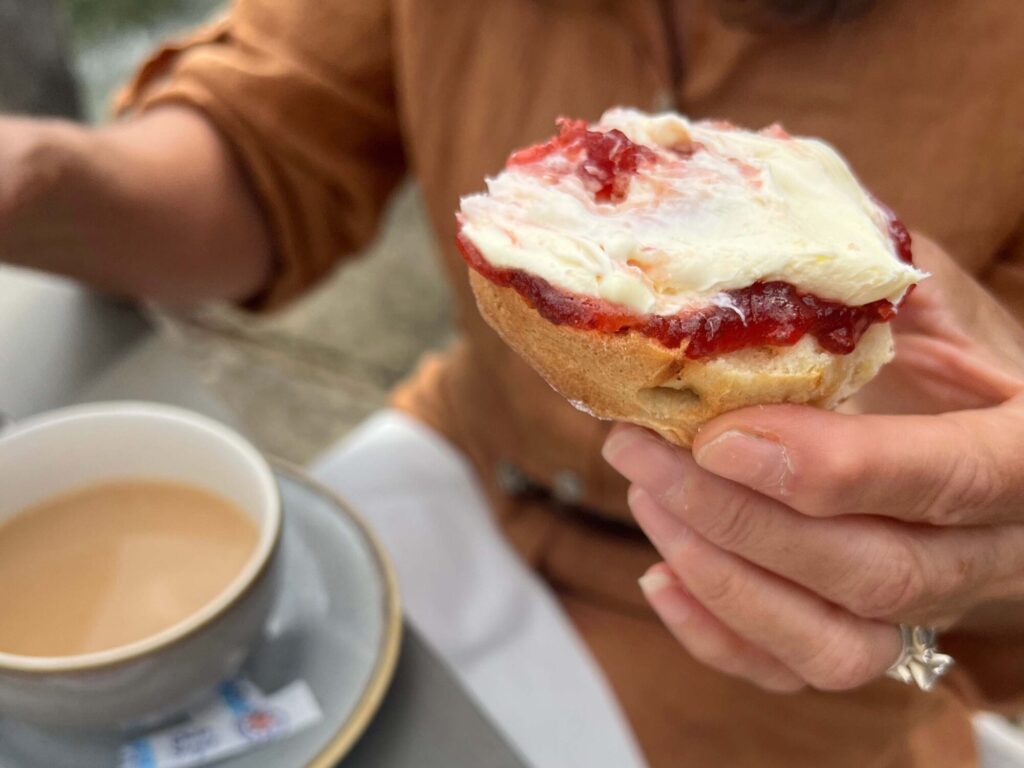
Which should you choose?
Afternoon Tea, High Tea, and Cream Tea each offer a unique glimpse into rich culinary history and cultural traditions. From the refined elegance of afternoon tea to the hearty simplicity of High Tea and the rustic charm of Cream Tea, each tradition reflects the diverse social, economic, and regional influences that have shaped British society over the centuries.
Whether enjoyed in a grand hotel tearoom, a cozy village tearoom, or the comfort of one’s home, these cherished rituals continue to bring people together over a shared love of tea, good food, and conviviality. As we raise our teacups in celebration, let us toast to the enduring legacy of these quintessentially British customs.
A trip to Windsor would not be complete without a tea experience. Now that you know the difference between afternoon tea, high tea, and cream tea, choose one here.
